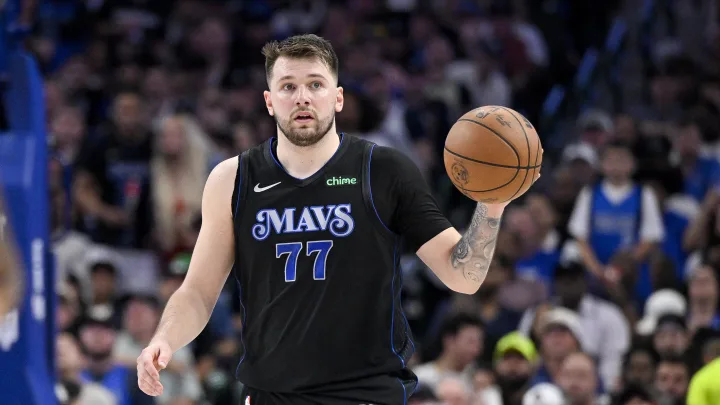Overview of the Mavs Injury Report
The Mavs injury report serves as an essential tool for both fans and team management, providing crucial insights into the health and availability of players. This report is updated regularly and includes a variety of pertinent information ranging from player statuses to the specific nature of their injuries and anticipated recovery timelines. Maintaining an accurate and up-to-date Mavs injury report is vital for evaluating team performance, managing game strategies, and setting realistic expectations for fans.
One of the primary components of the Mavs injury report is the player status, which can range from “available for selection” to “out” or “questionable.” Understanding these statuses helps coaches make informed decisions regarding lineups and substitutions, which can ultimately influence the game’s outcome. Furthermore, the report typically categorizes the types of injuries, such as sprains, strains, fractures or concussions, allowing team staff and fans to grasp the severity of each situation. The details regarding recovery timelines provide an additional layer of transparency, helping all stakeholders manage their expectations accordingly.
Injuries can significantly impact a team’s performance; therefore, the Mavs injury report plays a significant role in shaping fan engagement and discourse. For fans, knowledge of which players are sidelined or nearing a return can dramatically affect their enthusiasm and morale, as each key player contributes to the team’s potential success. Understanding the Mavs injury report also helps management strategize both short-term and long-term impacts of injuries on the team. As fans closely follow updates and changes, the Mavs injury report becomes a crucial piece of the overall narrative in any given season.
Key Players and Their Injuries
The Dallas Mavericks have encountered several injury challenges throughout the season, which have notably influenced their performance and strategy on the court. A key focus of the mavs injury report is the current status of major players who are sidelined due to various injuries, providing essential insights into how these developments affect the team.
One of the significant names on the injury report is Luka Dončić, the team’s star player. He is experiencing ankle issues that have kept him out of multiple games this season. Historically, Dončić has struggled with sporadic injuries, which raises concerns regarding his long-term durability. The Mavs are closely monitoring his recovery, and while there is optimism about his potential return in the coming weeks, his absence is undoubtedly felt, as he plays a pivotal role in orchestrating the team’s offense.
Additionally, Jalen Brunson’s recent groin strain is another point of concern. His injury history indicates a tendency for these types of muscle strains to linger. The franchise is optimistic about his recovery, projecting that he could be back in practice soon. Nonetheless, the impact of his absence has forced the Mavs to alter their guard rotation, resulting in increased responsibilities for other players.
Furthermore, Maxi Kleber has been diagnosed with a back issue that has plagued him throughout the season, affecting his ability to contribute defensively and offensively. His expected return date remains uncertain, and this prolonged absence is significant, considering his critical role in the Mavs’ defensive schemes. Overall, the impact of these injuries on the team’s dynamics and strategies cannot be overstated, as they challenge the Mavs to adapt quickly to the changing roster composition. Keeping a close eye on the mavs injury report will be vital for fans and analysts alike to understand how these developments continue to shape the team’s trajectory this season.
Recent Trends in Player Injuries for the Mavs

The Dallas Mavericks have recently witnessed a concerning trend regarding player injuries that warrants close examination. Recurring injuries among key players have become a significant issue, impacting the team’s performance and overall season outlook. Notably, certain players have faced repeated physical setbacks, raising questions about their individual training regimens and the potential need for adjustments in their conditioning programs.
Several factors contribute to these injury patterns, including the training regimen employed by the Mavericks’ coaching staff. A rigorous training schedule can lead to an increased risk of injury, particularly if players are pushed beyond their physical limits without sufficient recovery time. The integration of a more balanced approach to strength and conditioning may be necessary to mitigate these risks. Investigating whether recent changes in coaching strategies have led to an uptick in injuries is pertinent, and a review of training methods could highlight areas for improvement.
Moreover, it is essential to compare the Mavericks’ injury trends against those of other teams across the league. Some franchises may have adopted preventive measures that have succeeded in minimizing injury occurrences. By analyzing these differences, the Mavericks can glean insights and perhaps implement similar strategies to enhance player health and wellness. Their current injury report, which reflects these challenges, signals potential implications for the team’s capabilities moving forward.
In conclusion, understanding the recurring injury patterns within the Mavericks, the effects of their training regimens, and contrasting these with league-wide trends will provide critical insights. These observations will be vital for the team to develop proactive measures to improve player health and ensure a robust performance throughout the season.
Impact of Injuries on Team Dynamics and Fan Engagement
Injuries within a professional sports team have far-reaching consequences that extend beyond the immediate sidelining of players. The Dallas Mavericks, known for their competitive spirit, often find that the status of their roster, particularly as detailed in the Mavs injury report, directly influences team dynamics. When key players are injured, the morale of both the remaining players and coaching staff can be significantly impacted. Team members may feel increased pressure to perform, which can lead to stress and altered on-court chemistry. Coaches are compelled to adjust their strategies and lineups, often relying on less experienced players to fill in, which can further affect overall team cohesion.
Moreover, injuries may lead to shifts in game outcomes, particularly if star players are unable to contribute. For instance, the absence of a leading scorer can diminish the team’s effectiveness and overall performance, leading to losses that affect standings and playoff aspirations. This uncertainty is enough to impact not just the players and coaches, but also the fan base that follows the Mavericks passionately. Fans often look to the Mavs injury report for updates, which can either spark hope—when players are on track to return—or trepidation when the outlook appears grim. This cycle of optimism and disappointment can broadly affect fan engagement.
Alongside the practical implications of player injuries, there is also a more abstract challenge that arises related to fan engagement. Ticket sales may fluctuate based on the health of star players; fans are typically more inclined to attend games featuring their favorite athletes. Media coverage can similarly shift focus, exploring the implications of various injuries and lineup changes. Nevertheless, fans can find ways to stay engaged, such as participating in online discussions, supporting the team through merchandise, or attending events regardless of roster status. Through such actions, loyalty to the Mavericks can triumph over the temporary setbacks presented by an evolving injury report.

